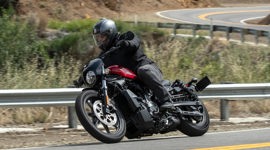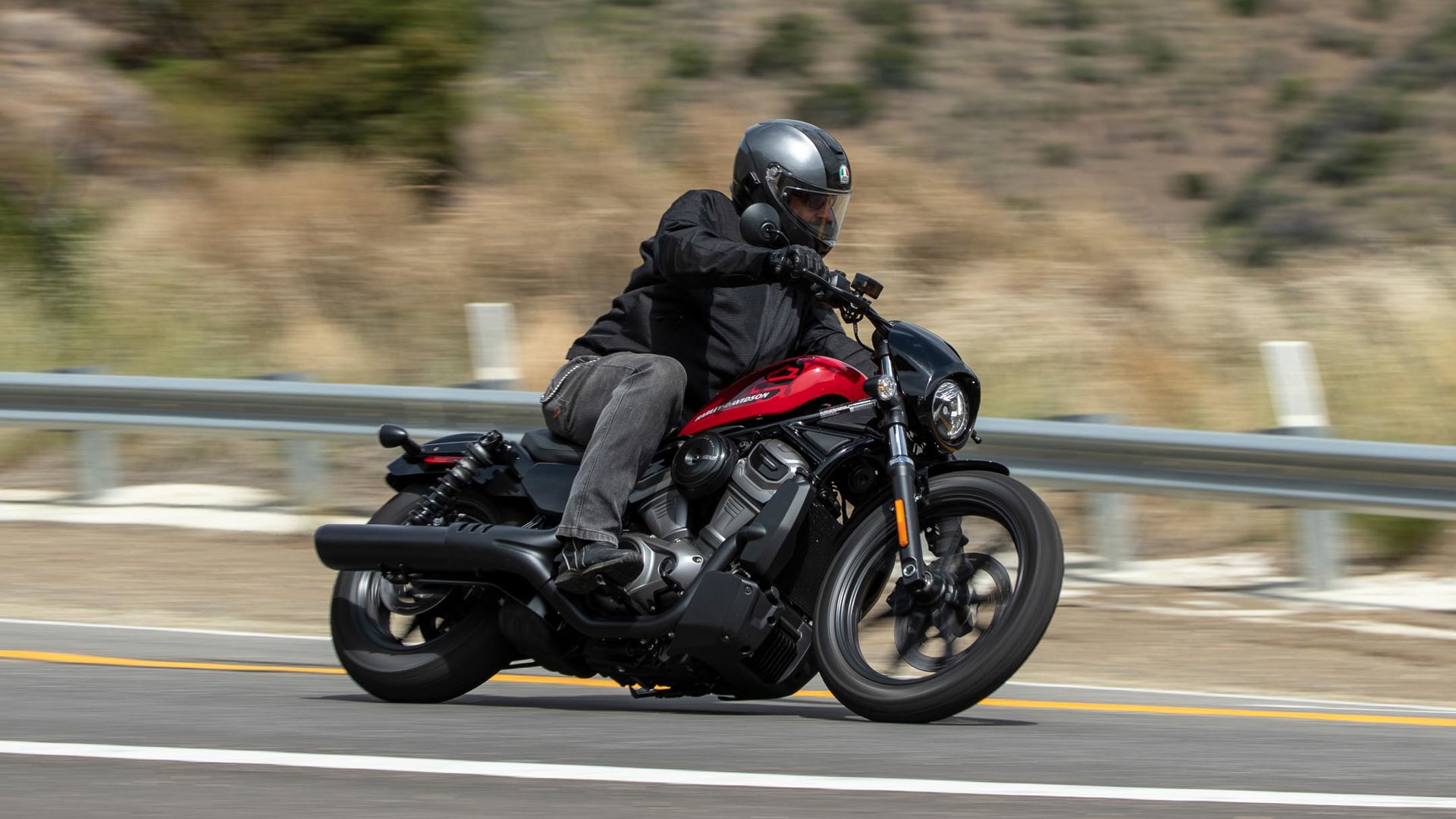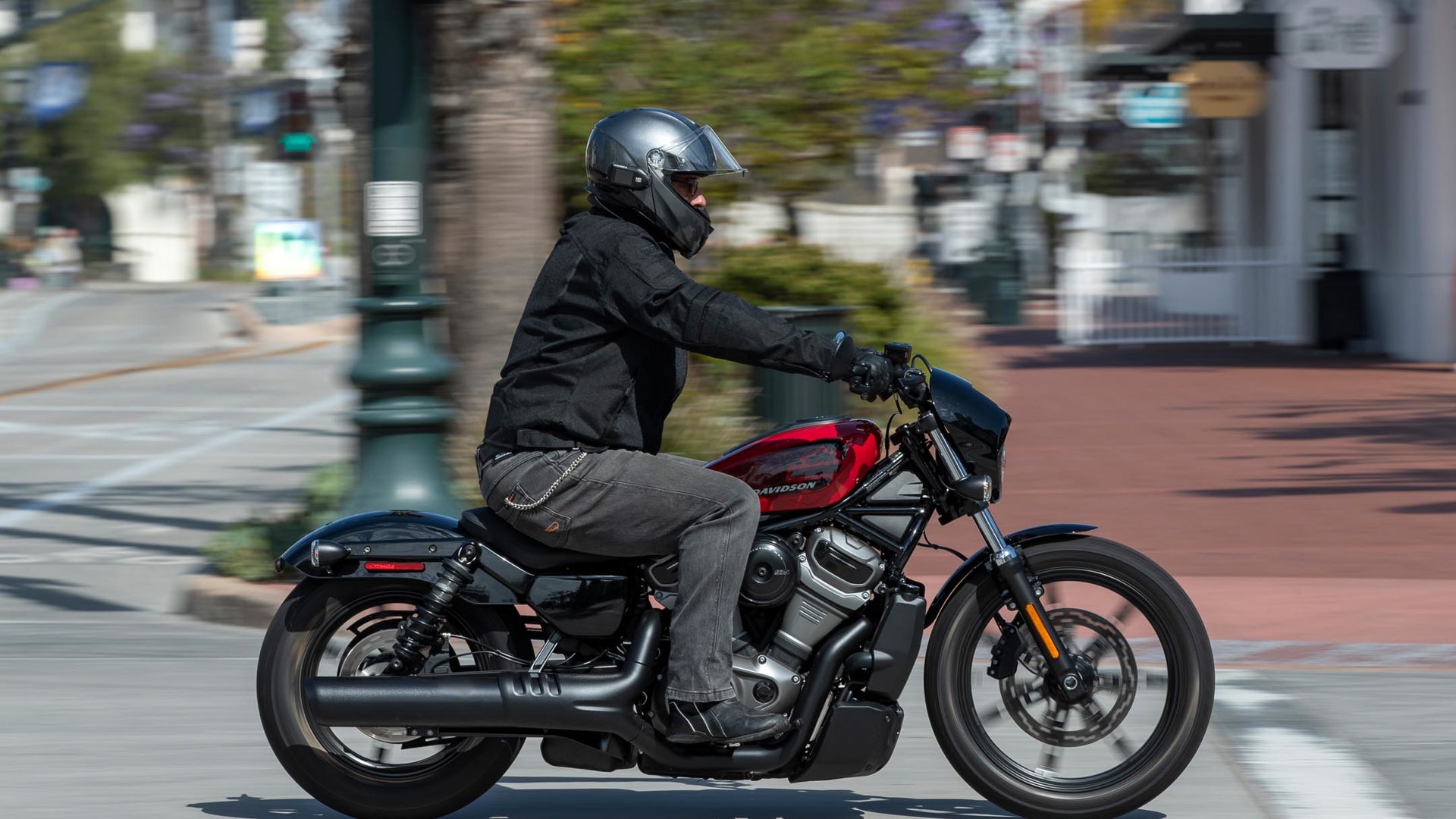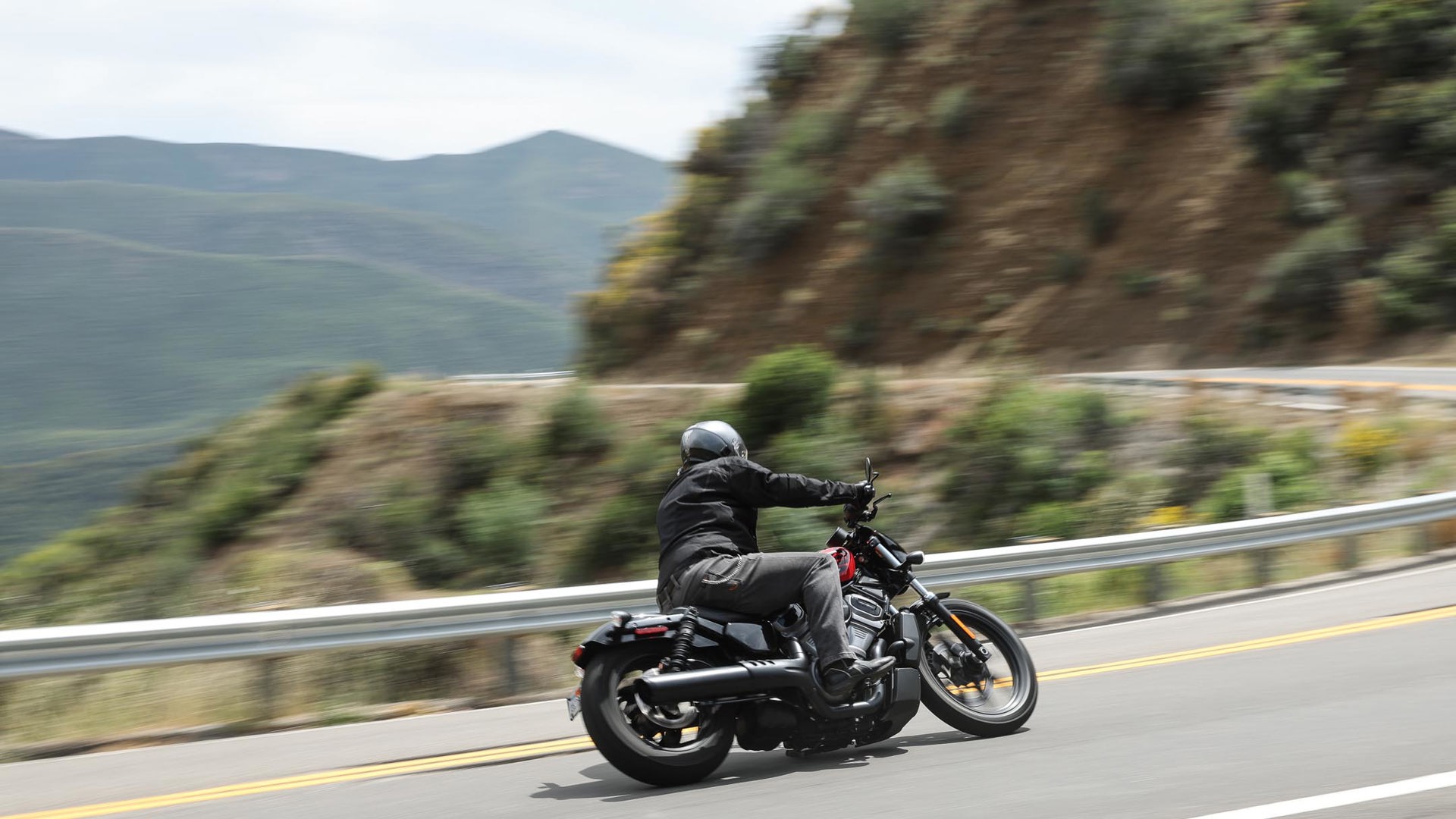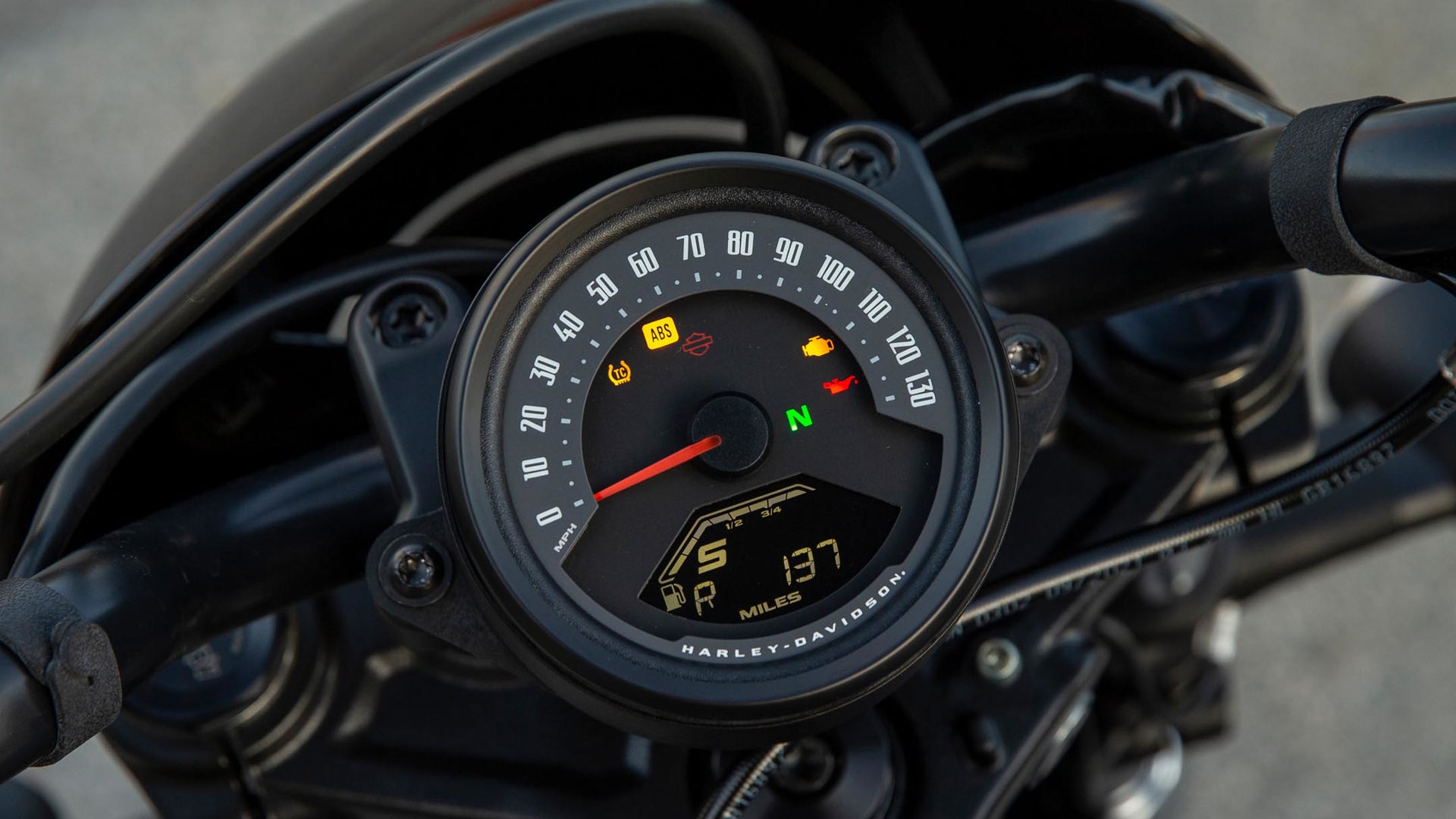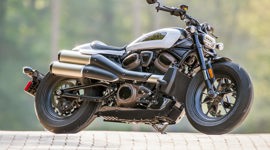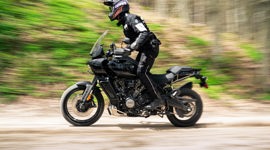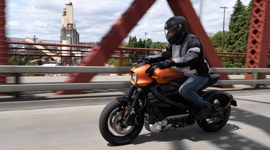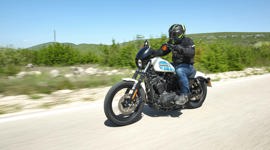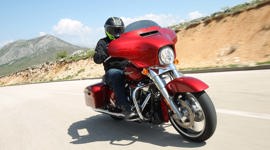Originally published on Canada Moto Guide: Review: 2022 Harley-Davidson Nightster
There’s a revolution going on at Harley-Davidson, and it’s built around speed, power, and a radical reworked vision of the future of the company. The new Nightster is a clear indication that major changes are already happening at the American motorcycling icon.
Long the stalwart maker of air-cooled, push-rod activated cruisers, Harley tried to break out of that box more than 20 years ago with the V-Rod machines co-designed in part with Porsche, only to have them left orphaned by the brand’s loyalists, who shunned them despite their superior performance metrics. An acquired taste, it would seem, from 1999 until 2017, you can pick one up for a very reasonable sum these days.
But why would you (unless you’re just a big V-Rod fan) when you could instead saddle up the new Nightster or Nightster Sportster (if we’re being somewhat technical about nomenclature)? Call it what you will, the third motorcycle to be built around the new Revolution Max modular engine platform is the Sportster reborn, 65 years after it entered the lineup as the faster, leaner, and more affordable Harley. It’s a return to the Sportster’s roots, while also looking far ahead into the future of The Motor Company. Harley kindly invited myself and a slate of about 10 other journalists to give the new Nightster a go on California’s famed Highway 33 outside of Santa Barbara, and it did not disappoint.
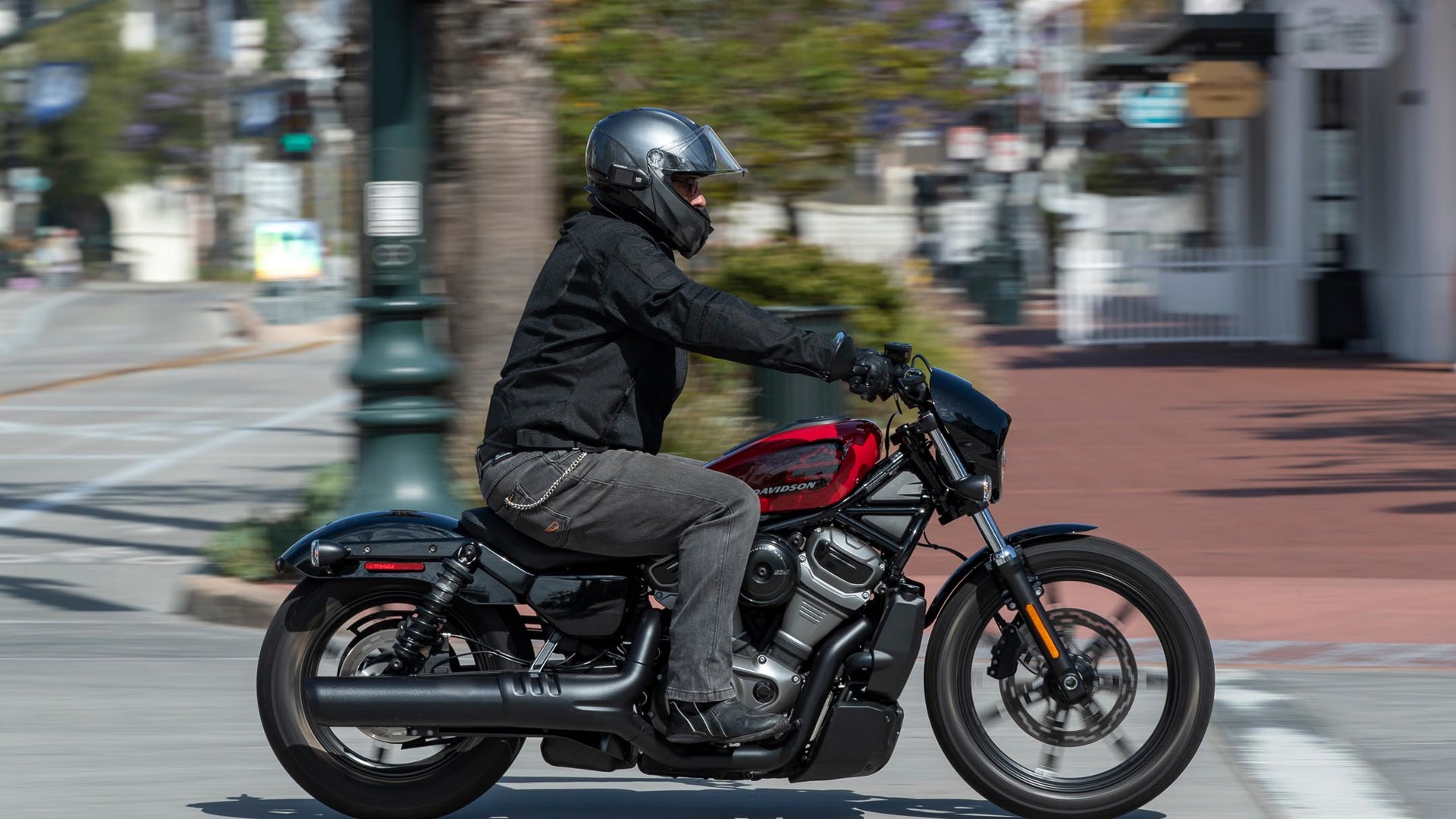
At 481 pounds full of gas, the $16,499 Nightster is over 100 pounds lighter than the previous sportiest Sportster, the vaunted Buell-breathed-on XR1200 from the aughts. It also makes more power and arguably handles better while being thoroughly modern in pretty much every way, except for the style of the bike, which is clean and no-nonsense, almost to a fault. The base colour is black; red or the hip new shiny grey options add $500.
A stout 90 horsepower flows from the sleeved-down Revolution Max 975T 60-degree V-twin, backed up by a solid 70 pound-feet of torque. The engine casings are the same size as the larger 1,250-cc displacement Sportster S and Pan America adventure bike, but the bore and stroke have been re-jigged for the 975-cc displacement. Other engine tech details: This engine uses one spark plug per head instead of two and loses variable valve timing for the exhaust valves but keeps it for the intake poppets. In place of the old five-speed transmission is a six-speed box much more tightly integrated than on the air-cooled machines. Hydraulic valve adjusters keep the motor in a constant state of proper tune and reduce maintenance costs.
Some novel features: The “gas tank” doesn’t hold a single drop of fuel. Gas goes into a 3.1-gallon cell under the seat while the faux tank up top works as an expanded airbag to help the motor breathe and make power. That strategy also allowed Harley to keep a classic “peanut” tank shape to it, but it’s one of only a few nods to to the old bikes. Another is the round “air cleaner” that’s more conduit than cleaner, and a set of twin rear shocks with preload adjust and 3.1 inches of travel (up from about two inches on the old bikes), whereas the Sportster S has a more modern and adjustable undersea monoshock setup.

LED lights are standard all around and a single instrument graces the handlebar. The 4-inch round speedometer may look classic from a distance but a small inset LCD screen below the analogue speedo provides a wealth of data including fuel level, gear position, ride mode (Road, Rain and Sport), RPMs, range to empty, and even the time. The usual warning lights are invisible until they activate.
More standard tech rides along on the Nightster, including dual-channel ABS for the single Brembo rotors front and rear, as does traction control, which can be turned off with a bar pod button. Changing ride modes switches up traction control governance, ABS intervention, and throttle behaviour. Blow a shift and a slipper clutch will preserve the internals for another day. One feature I feel Harley could have easily added is cruise control; hopefully future models will include it. There’s no ignition switch on the Nightster; like many motorcycles and cars today, a wireless fob with proximity detection lets you fire up the bike once you’re on board. Lose your key and you can tap in a PIN to override the security system to get back home.
Briefed and ready to travel, we rolled out of Santa Barbara and into the mountains towards Highway 33, a favourite haunt of local sport riders, and for good reason. The two-lane tarmac twists and writhes into the San Bernardino mountains, challenging riders to press the limits of the Nightster’s lean angles, which are much improved over the old bikes. Still, this is no Ninja fighter and pressed hard, the centre-mounted pegs will chip the pavement to warn you things are getting serious. But that takes a lot of effort on the Nightster, and riding in Sport mode on the mostly traffic-free highway allowed riders to sample the abundant power and finesse of the Revolution Max 975. Maximum thrust resides just above 7,000 rpm, a considerable number far beyond the maximum rev limit of the old bikes. Ignition intervention steps in at the 9,500-rpm redline, but you should shift before that point anyway, as power falls off above 9,000 rpm, and in anything above second gear, velocity at those revs is considerable – and likely illegal.
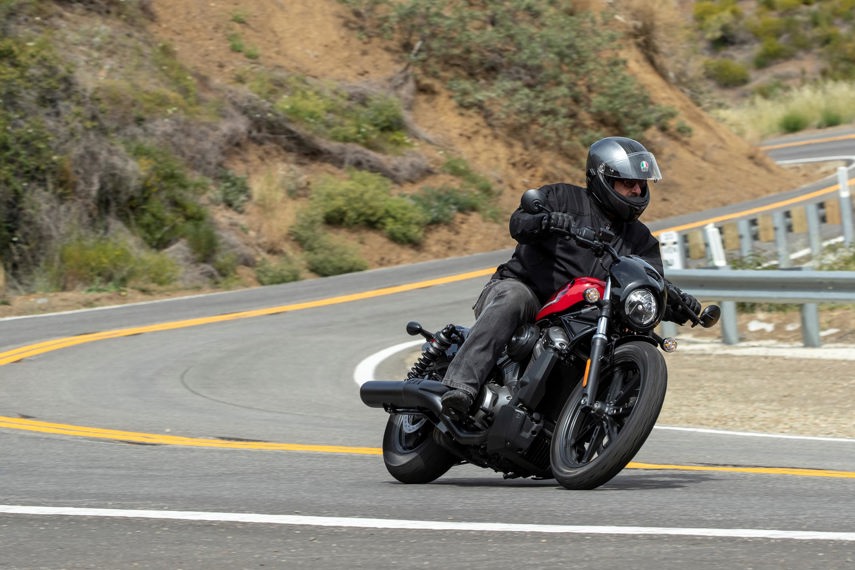
Charging into corners, the Nightster is in its element, and unless you’re a sport bike hero, the capabilities of the bike will satisfy the skills of the majority of riders who, in the past, might have otherwise avoided a Sportster. They should reconsider.
That said, the Nightster would also be a smart choice for beginner riders. For a nearly 1,000-cc bike, weight is fairly low and the seat is also low enough that those just starting out can get both feet down flat, and the real-world ergos, flat handlebar and tech helpers – ABS and traction control (TC) especially – mean most rookie mistakes are more likely recoverable. In Rain mode, ABS and TC are at their most active, while engine power is reduced, and it can double nicely as a “learner” mode. As new riders put on the miles and gain confidence, they can level up to more power and less interventions. Plus, I found the Nightster to be unexpectedly comfortable, especially the stock seat. We were on the bikes for the better part of a day, and I had no seat soreness or other fatigue I’ve experienced on many other much more expensive motorcycles.
That comfortable seat, along with six gears including the tall top gear netting over 4.7 L/100 km (50 mpg) under easy throttle, means long-distance adventures are just a few accessories away. This is a fun and versatile motorcycle that most beginners would find easy to love and difficult to outgrow. Plus, it’s a Harley, and if you’ve ever visualized yourself owning one but we’re put off by the lack of tech and modernity of the air-cooled models, then your bike has truly arrived.
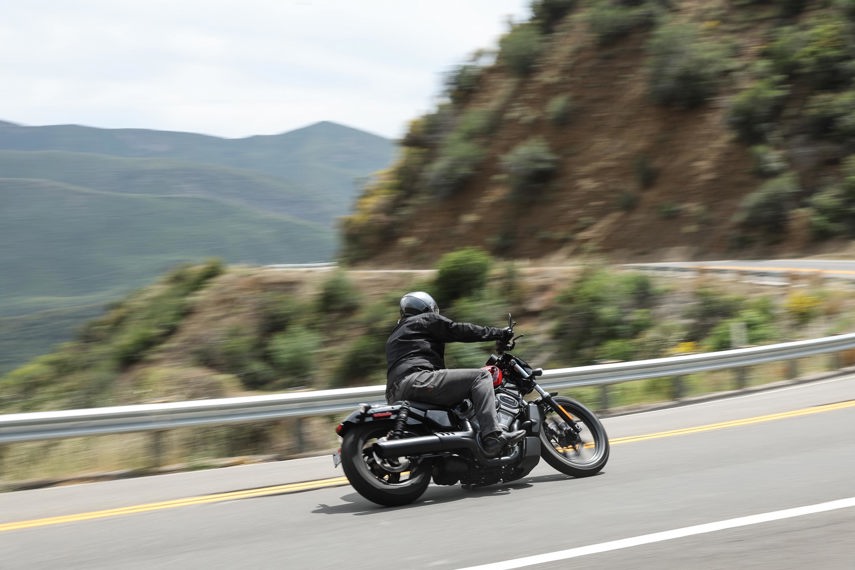
Rolling back into Santa Barbara after our blast up the 33, the sun was dipping down into the vast Pacific as the Nightster ticked along in sixth gear, barely breathing at freeway speeds. Despite only a small bug screen above the headlight that only offers the speedo shelter from oncoming critters, the Nightster’s central, standard seating position – and comfy seat – make for a relaxed, no-worry ride, even at (legal) freeway speeds. The little LCD says I have over 113 km (70 miles) of range left from the underseat tank, and while it had been a long day in the saddle, I was a bit disappointed to return to the launch point and hand the key fob back to the prep team.
The Nightster is another smart and solid move forward by Harley-Davidson.
